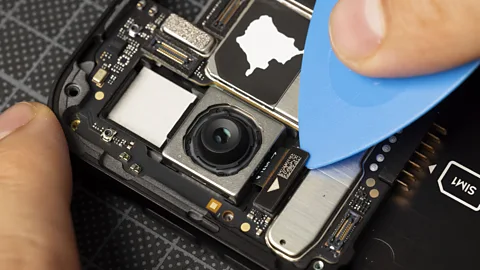What does a sustainable smartphone look like?
Isabelle Gerretsen
Features correspondent•@izzygerretsen
 Getty Images
Getty ImagesIn a bid to reduce global electronic waste, Fairphone has created a smartphone that owners can repair themselves. What makes its technology so sustainable?
"This is my phone's camera," says Bas van Abel, holding a small, square component aloft. He has just removed it from his smartphone, using a tiny screwdriver.
"There's eight components in total which can be removed and replaced," he says, as he meticulously disassembles his entire smartphone, placing the camera alongside his phone battery, USB port, screen and loudspeaker.
